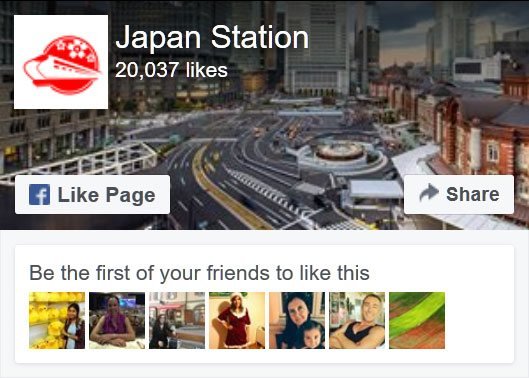Minatogawa Jinja is a shrine located close to Kobe Station and the Kobe Harborland shopping district. Although it is an important shrine in Kobe, it is not so well-known among tourists, so on most days it is a nice, quiet spot in the city, where you can enjoy some peace from the crowds. However, during New Year’s celebrations Minatogawa Jinja is Kobe’s most popular shrine with over a million people visiting from all over the country.

Minatogawa Jinja Shrine’s main entrance gate dates from 1942
This shrine is dedicated to the spirit of Masashige Kusunoki, a samurai leader who is famous for his loyalty to the emperor. The name “Kusunoki” means “camphor tree” in Japanese, so there are many tall camphor trees on the shrine grounds which provide shade and make the shrine a green oasis in the city.
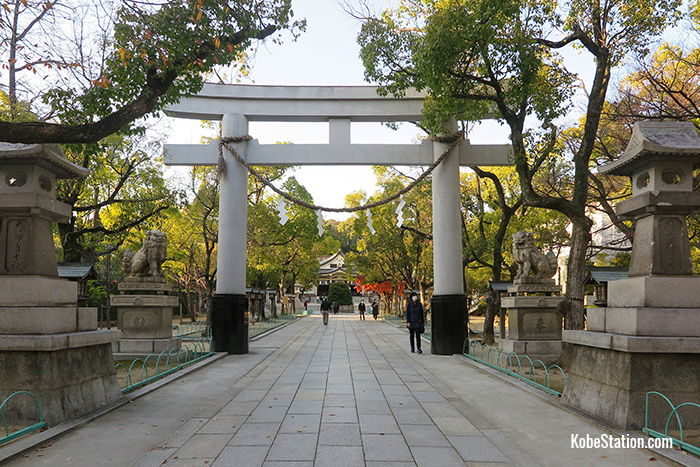
The Otorii gate fell during the Great Hanshin earthquake in 1995 but was rebuilt with earthquake resistant steel
History
Masashige Kusunoki (1294 – 1336) was a samurai leader who fought and died in the service of the Emperor Go-Daigo in the 14th century. In 1336, the emperor ordered Kusunoki to attack a much larger rebel army in an area close to the Minatogawa River. Although Kusunoki knew he would be defeated and killed, he obeyed his emperor’s command. In the Battle of Minatogawa, Kusunoki’s forces were surrounded and destroyed and both he and his brother were killed. According to legend, the last words of the brothers were, “Would that I could serve my country for seven lifetimes!”
Kusunoki became famous for his loyalty to his emperor, and his spirit of self-sacrifice. After the Meiji Restoration of 1868, when the shogunate was overthrown and political power was returned to the Imperial throne, Kusunoki was increasingly celebrated as an example to the nation. In 1872 Minatogawa Jinja was established as his shrine roughly on the site of the Battle of Minatogawa.
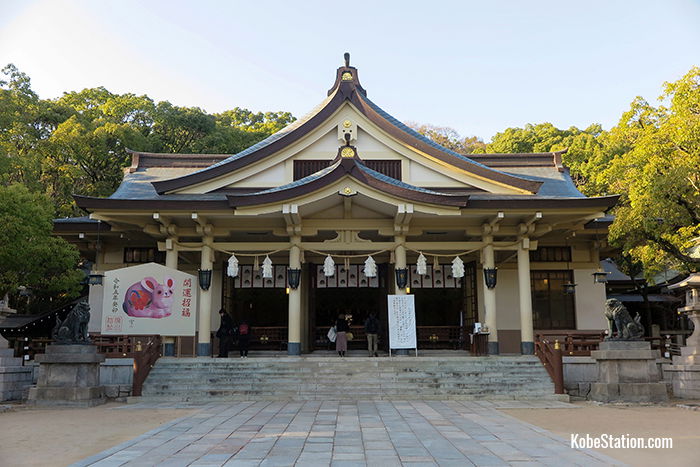
The main hall of the shrine
The Shrine Grounds
The main hall of the shrine was completely destroyed during the bombing of Kobe in 1945 and then rebuilt in 1952. Built with reinforced concrete it is a fine example of post-war shrine architecture. People pray here for their families, for good marital relations, for safe childbirth, for safety in traffic and for good luck.
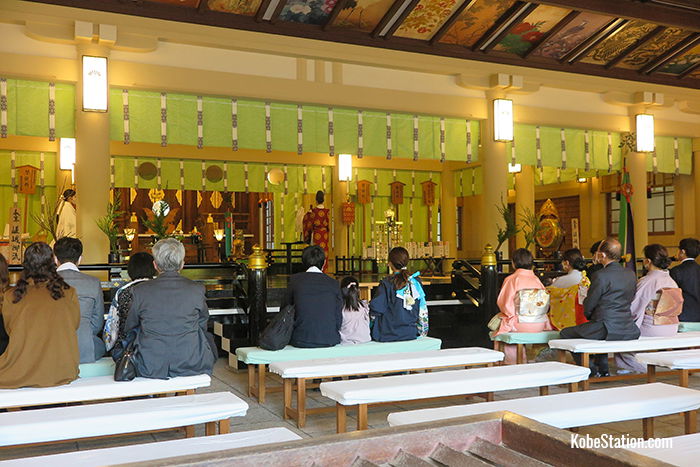
Inside the main hall
Inside the main hall of the shrine take a look at the artwork on the ceiling. When the main hall was being rebuilt, artists from across Japan offered their paintings to the shrine and 164 of these paintings now decorate this ceiling.
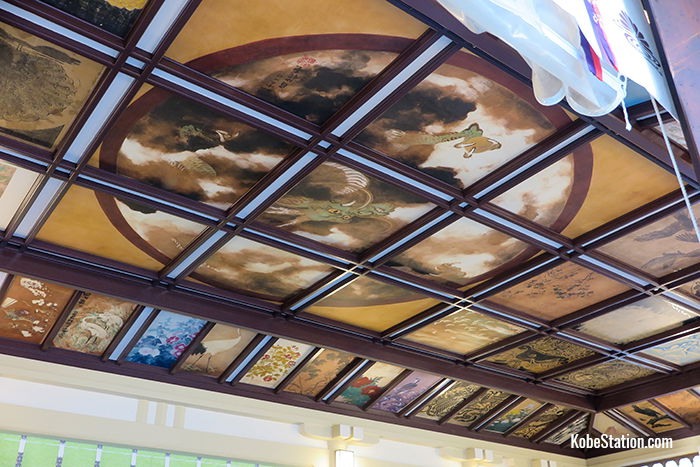
The ceiling of the main hall
Also on the shrine grounds there is a sub-shrine dedicated to Inari, the god of rice, which is easy to spot for the many red torii gates that form its entrance.
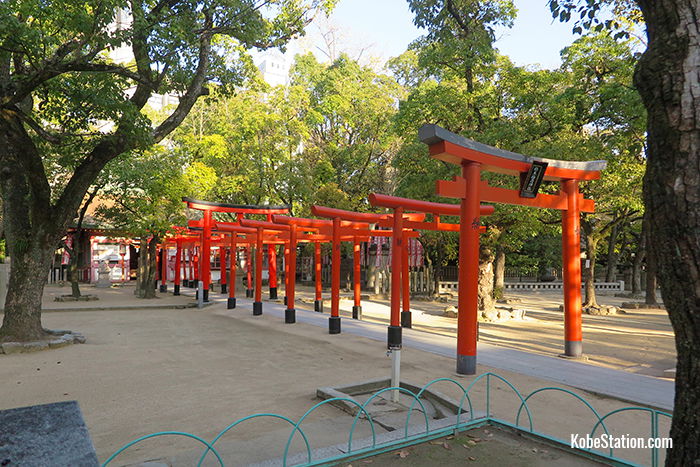
The torii gates leading to the Inari shrine
Farmers pray at the Inari shrine for a good harvest while others pray for success in business.
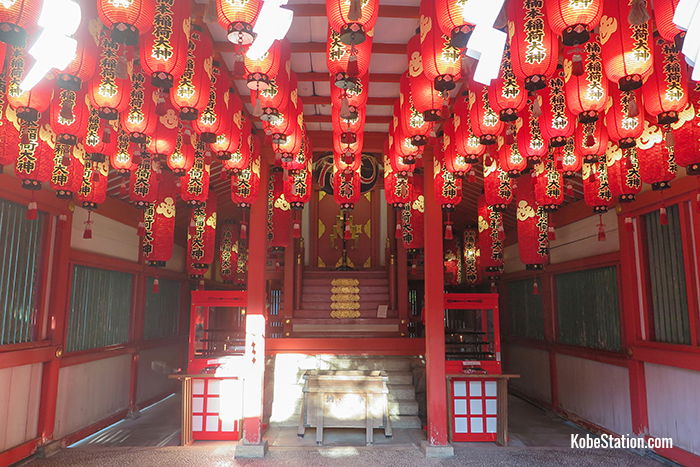
The Inari shrine
The Inari shrine is particularly worth a look for its many hanging lanterns.
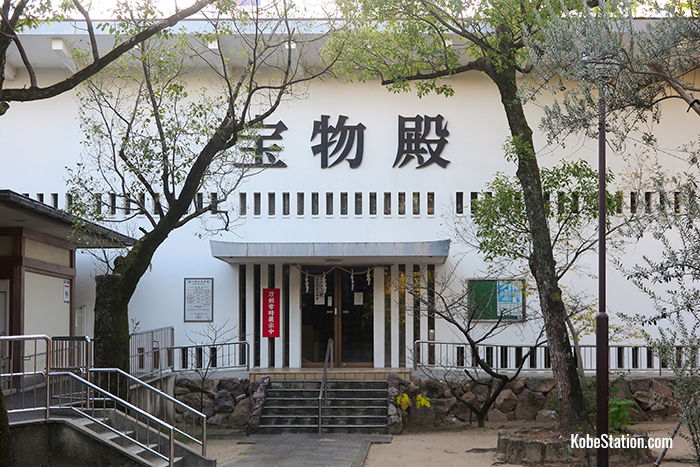
The treasure hall
The treasure hall was completed in 1963 and has on display precious items related to Kusunoki Masashige which include swords, armor, calligraphy and paintings. Some of the items on display are nationally designated Important Cultural Properties. Admission to the treasure hall costs 300 yen for adults, 200 yen for senior high and university students, 100 yen for junior high and elementary school students and is half-price for disabled visitors. It is open from 10.00 to 15.00 but closed on Wednesdays.
A three-day festival to honor Kusunoki Masashige is held from May 24th to May 26th every year and includes performances with taiko drums, dances with swords and fans, choral singing, poetry recitals, and a market of handmade goods.
Location
Minatogawa Jinja is a four-minute walk from Kobe Station on the JR Kobe Line and just 2 minutes from Kosoku Kobe Station on the Kobe Kosoku Line. It is also 6 minutes from Harborland Station on the Kaigan Subway Line and 3 minutes from Okurayama Station on the Seishin-Yamate Subway Line. From the Kobe Harborland shopping district it takes 8 minutes on foot.
Admission to shrine grounds: Free
Opening hours: The shrine office is open from 9.00 to 17.00.
Article and original photos by Michael Lambe. All rights reserved.
